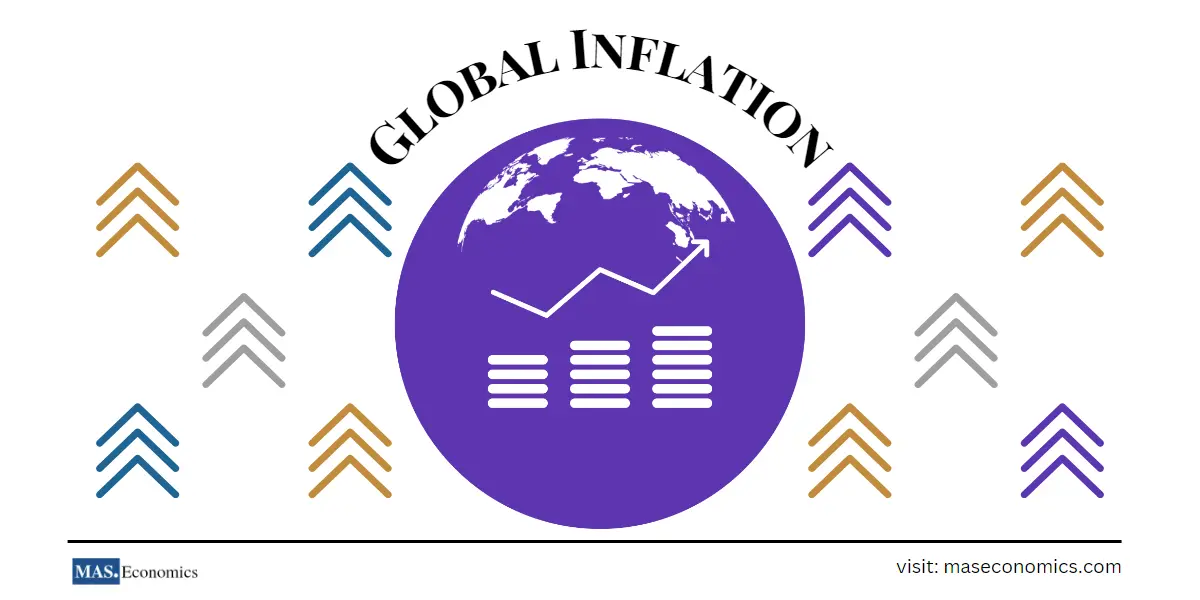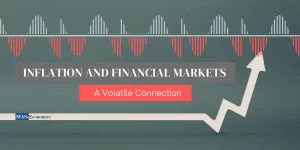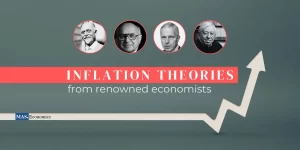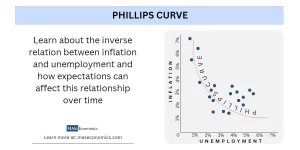The global surge in Inflation Rates
The economic picture across the globe looks bleak in the short term. Global inflation is on the rise, and it is causing a lot of concern for people. It is driven by commodity prices increasing due to strong global demand and supply constraints compounded by weak currencies in some countries driving up import prices.
The last time we saw inflation rates this high was in the 1970s. This was a difficult time for many people, as prices constantly rose, making ends meet difficult.
Nearly half of the world’s countries have to deal with unprecedented double-digit inflation rates or even more. In extreme cases, even triple-digit inflation rates have been recorded.
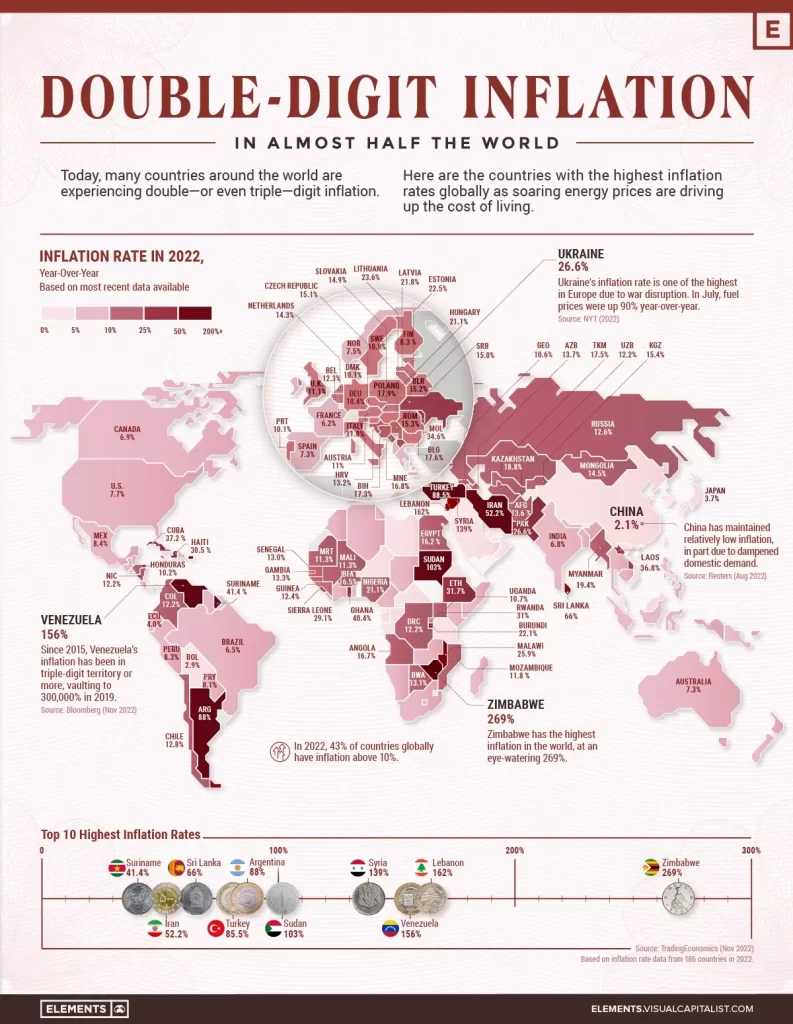
Let us examine how these factors impact the world economy and what policy options are available to combat inflationary pressures.
What are the Causes?
The surge in global inflation is mainly attributed to increasing commodity prices due to strong global demand and supply constraints and weak currencies in some countries driving up import prices. The current situation differs from prior episodes because it combines supply-side factors (such as tight labor markets) and demand-side pressure (such as increased spending).
Figure 1- Inflation Drivers
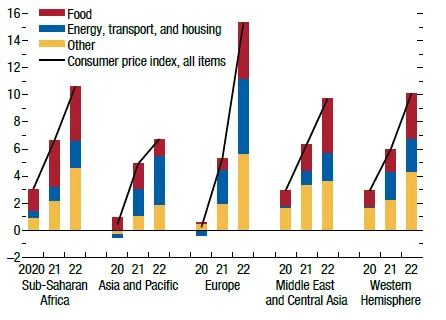
Source: IMF’s World Economic Outlook, October 2022
The COVID-19 pandemic has tremendously impacted economies worldwide, leading to an unprecedented recession due to workplace shutdowns and safety concerns. This resulted in supply collapsing and demanded falling drastically, with wages and income diverging due to rising unemployment and unpaid leaves. Additionally, disruptions to intricate supply chains further aggravated the situation.
Even though the Governments of many countries have implemented relief measures to restore demand, the recovery has been slow due to continued restrictions and delays from China’s zero-tolerance policy on COVID-19.
Inflationary pressures are greater in Europe due to the high dependence on energy and food from countries involved in the conflict in Ukraine. The war in Ukraine is causing a lot of human suffering and damage. The war also makes it hard for people in Europe to live normally. Europe has had to put sanctions on Russia to try and make them stop the war. Russia’s economy has also taken a hit from the war. The war is also causing food prices to go up around the world.
The result of this is that other currencies have fallen in value against the dollar, necessitating central banks to lift their interest rates.
All of these things have combined to make the global economic outlook for 2022 look pretty bad. Nevertheless, some positive developments have been made, like a deal for grain exports from the Black Sea. So things might not be as bad as they seem for the global economic outlook for 2023.
Policy Options
Inflation is a complex process that takes into account a lot of different factors. Central bankers have to take all these things into account when making decisions.
Globalization has caused long-term economic growth in the past, but now it is causing problems in countries like China and the US. There are a lot of big shocks happening these days, like wars and pandemics, that can make inflation go up. Central bankers also have to worry about controlling inflation and growth when people are pressured to do things a certain way. It isn’t easy to make decisions when you have all this on your plate! However, central bankers must think about all these things to have stable economies and prosper.
After calculating all the risks and facts, Central banks have raised their policy rates to prevent inflation from becoming a problem. The Federal Reserve (FED) has been the leader in this effort. However, there are differences between different countries in how quickly they raise rates and why. This is because different countries have different levels of inflation and economic conditions, as well as differences in how much fiscal stimulus they have given. With prices rising in many advanced economies, it will be necessary for central banks to stay vigilant and act quickly, if necessary, to keep prices stable. If they do not do this, inflation could become entrenched and difficult to control.
Moreover, for the European Union to control energy prices, they should forget about price caps and instead focus on creating a fund to protect consumers from high gas prices. This would involve incentives for energy savings and the accelerated deployment of clean technologies. Another measure to reduce gas prices would be for the EU to purchase gas jointly through an energy platform instrument. This would help ensure enough gas is available in case of a severe supply problem.
These solutions would help Europe overcome its disagreements over maximum prices and unite against Russian aggression.
However, these approaches can be difficult for developing countries that are already struggling economically, as they could further destabilize them or lead to recessionary conditions. Additionally, rising inflation can increase debt levels since borrowing costs often rise with inflationary pressure. This additional burden could put further strain on emerging economies.
Therefore, advanced economies and international organizations need to provide additional support for emerging and developing economies facing inflationary pressures in order to prevent further destabilization.
Figure 2 – IMF’s forecast for Growth and Inflation
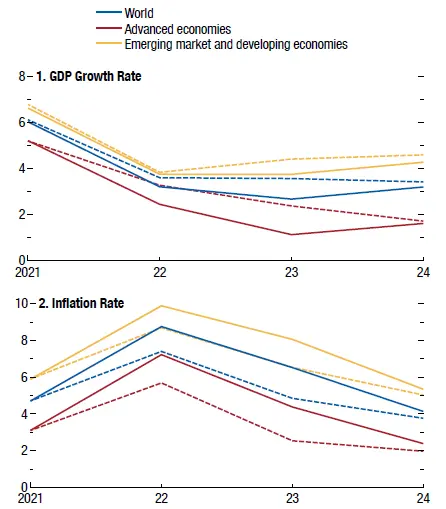
Alternative Option
Critics of the above policy said that the global economy had been affected by the traditional misunderstanding of supply-side constraints and inflationary pressures. This has led to governments implementing tight fiscal policies and raising interest rates to cool down the economy, but it has had little effect on inflation.
As a result, countries that are heavily indebted or continue to be indebted in dollars have been plagued by debt problems – which will become more and more severe as their service burdens grow.
According to them, one better way to address these issues is through Modern Money Theory (MMT), which emphasizes the importance of investing in infrastructure and renewable energy and targeted social spending to reduce inflationary pressures and restore growth. MMT also advocates for governments to issue their own debt-free money instead of borrowing from commercial banks or relying on taxes or austerity measures.
MMT could also help reduce poverty by providing targeted social spending to those who need it most while ensuring that economic growth remains inclusive. Overall, MMT could be an effective solution to the economic challenges posed by COVID-19. By investing wisely and targeting social spending, governments can reduce inflationary pressures and restore growth while meeting their sustainability goals.
This would create a more sustainable economic future for all of us.
Conclusion
Global inflation is on the rise due to various factors, including increases in commodity prices due to strong global demand and supply constraints combined with weak currencies driving up import costs in some countries. Monetary policy tightening measures may be available as an option for combating these pressures. However, they may not be feasible for emerging market economies that already have weak currencies and high debt burdens. Others believe MMT could be more effective in reducing inflation.
Another measure would be for the EU to purchase gas jointly through an energy platform instrument. These solutions would help Europe overcome its disagreements over maximum prices and unite against Russian aggression. It remains to be seen how these nations will fare once the full impact of this surge in global inflation is felt throughout the world economy.

